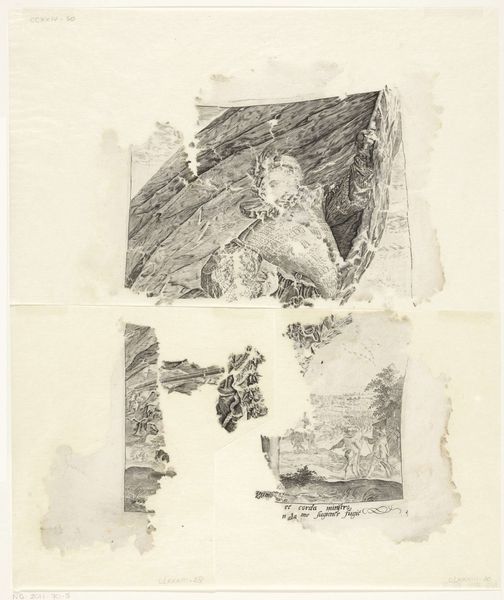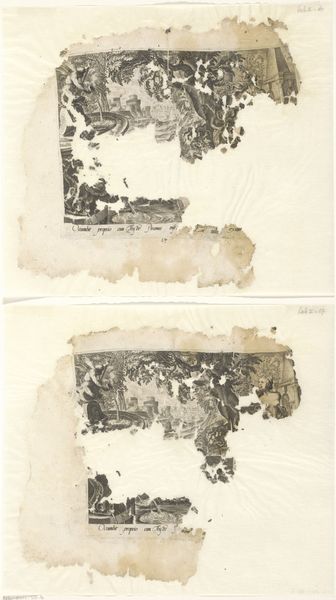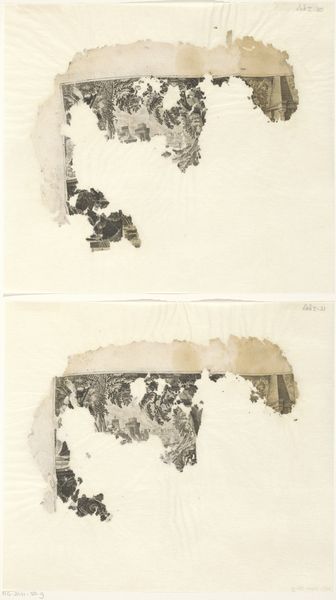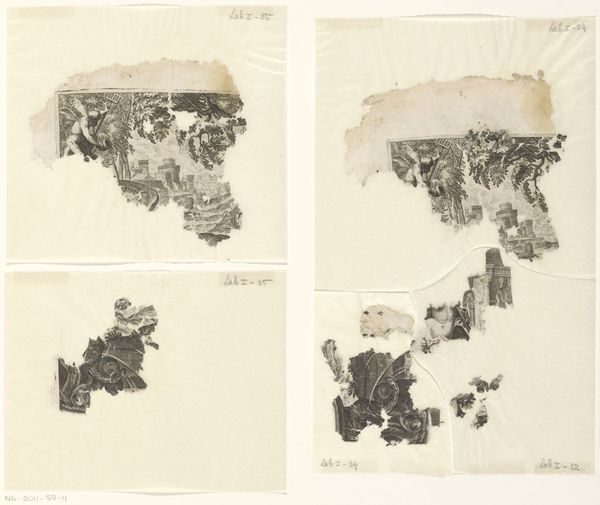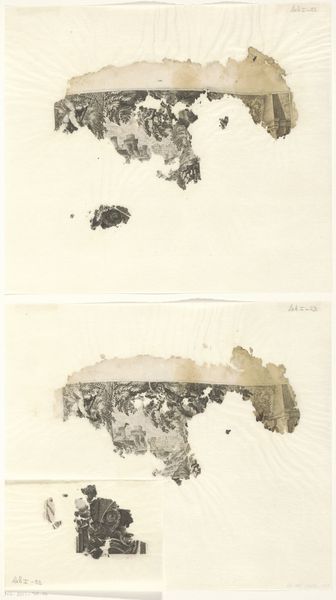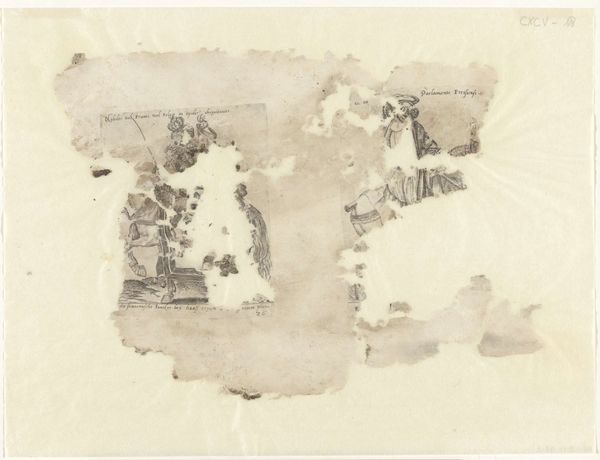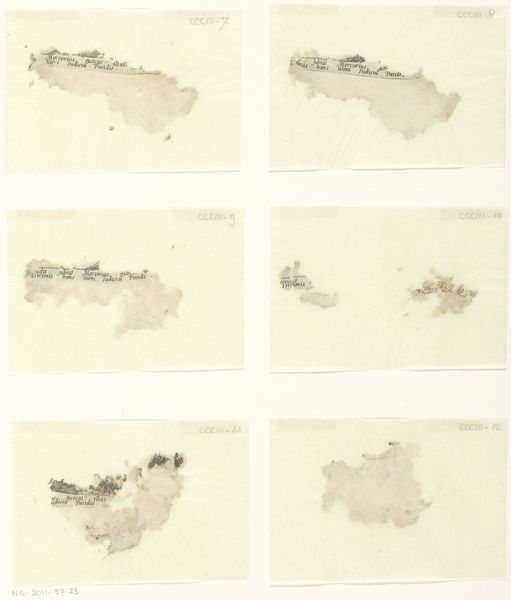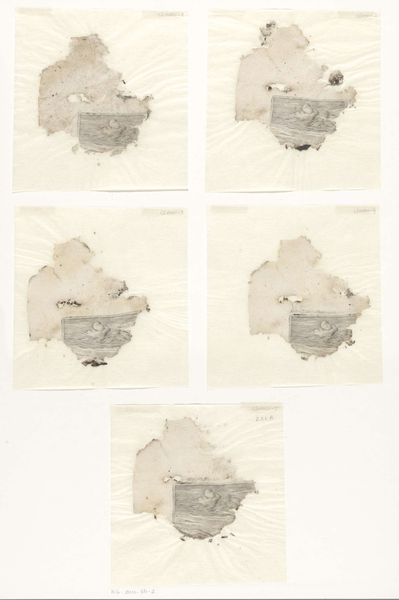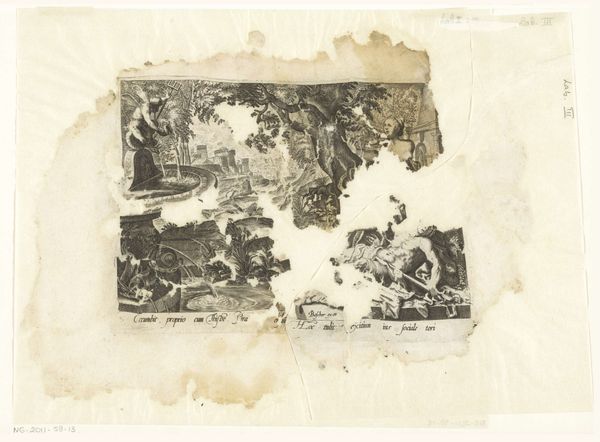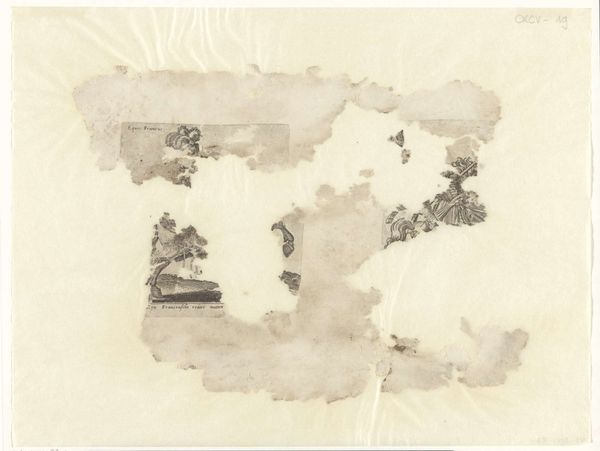
drawing, paper, ink
#
drawing
#
ink painting
#
figuration
#
paper
#
11_renaissance
#
ink
#
history-painting
Dimensions: height 283 mm, width 268 mm, height 252 mm, width 268 mm
Copyright: Rijks Museum: Open Domain
Editor: Here we have *Pyramus and Thisbe*, a Renaissance drawing in ink on paper, made sometime between 1580 and 1596. The fragmented quality of the piece gives it an eerie, almost ghostly feel. What strikes you most when you look at it? Curator: Well, aside from the obvious fragility that’s come with age, I'm intrigued by its purpose. Consider that in the late 16th century, printmaking was gaining momentum. Were these drawings preparatory studies for prints meant to circulate the tragic tale of Pyramus and Thisbe more broadly? That Ovidian narrative certainly held a particular resonance. Editor: So, the artwork's cultural context is closely tied to how accessible the story became through prints? Curator: Precisely! The political dimensions of imagery at this time are key. Disseminating stories visually could shape public opinion, offer moral lessons, or even reinforce existing power structures. This story, dealing with familial conflict and tragic love, has been adapted and interpreted repeatedly over centuries. It's fascinating to consider what nuances this particular depiction, if it became part of a circulated print, may have carried for its intended audience. Editor: It is easy to imagine its tragic appeal. Do you think this could be connected to the broader role art played in shaping social values at that time? Curator: Absolutely. Art wasn’t just decoration. The visual arts often were intertwined with politics. Think of how religious art influenced societies, or how powerful families displayed art to legitimise power. The imagery would shape public perceptions. What are your feelings on its role in shaping views in that time? Editor: I had never thought about this artwork within its political and social roles before. It definitely added an unexpected depth. Thanks. Curator: The intersection of art and society always yields compelling insights, doesn't it? I'll consider how printed images reinforced stories for consumption as well.
Comments
No comments
Be the first to comment and join the conversation on the ultimate creative platform.

